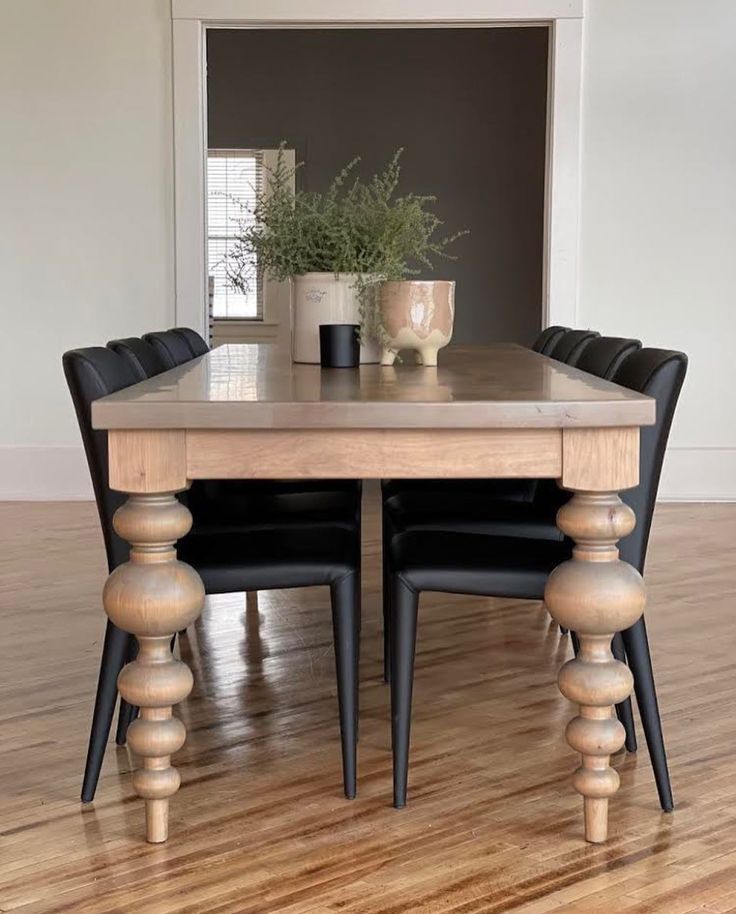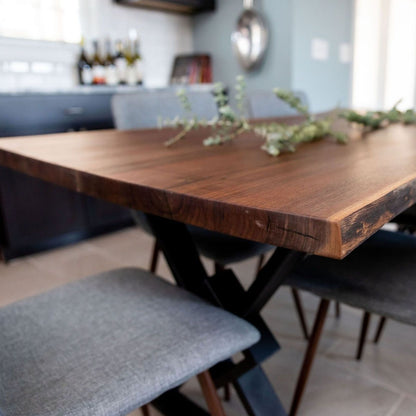The Top Trends in Dining Room Table Legs You Need to Know
The Top Trends in Dining Room Table Legs You Need to Know
Blog Article
Professional Tips for Installing Eating Area Table Legs for Maximum Stability
When it pertains to installing dining-room table legs, accomplishing maximum stability is critical for both functionality and appearances. The process starts with picking the ideal products and hardware, complied with by thorough placement and factor to consider of weight distribution. Each action plays a vital function in making certain that the ended up item endures everyday usage without jeopardizing safety or design honesty. Nevertheless, comprehending the subtleties of these elements can dramatically affect the overall result. What certain techniques can enhance security even further?
Pick the Right Legs
When selecting the ideal legs for your dining room table, it is important to take into consideration both functionality and aesthetics. The legs you choose will significantly impact the general style and stability of the table. First, evaluate the table's intended use; if you anticipate frequent celebrations, stronger legs, such as those made from strong timber or metal, may be better, as they use enhanced durability and support.
Basic eating tables typically vary from 28 to 30 inches in height, so ensure the legs line up with this criterion for convenience. Tapered legs can include a contemporary touch, while transformed legs may share a more timeless aesthetic.

Select Appropriate Hardware
How can the appropriate equipment boost the security and long life of your eating space table? The selection of suitable equipment is critical to guaranteeing that the legs of your table are firmly affixed and able to withstand regular usage. High-grade screws, screws, and braces supply the required stamina to sustain the weight of the table, along with any extra loads positioned upon it throughout dishes or events.
When selecting screws, choose those made from resilient products such as stainless-steel or brass, which resist rust and keep honesty gradually. The length of the screws is equally essential; they should permeate deeply into the table's structure without endangering stability. For bolted links, consider using lock washers to avoid loosening up as a result of vibration or motion.
Furthermore, using edge brackets can include added support, especially for larger tables or those with larger tops. These brackets disperse weight equally and aid maintain the table's form. Making certain that the hardware you pick is suitable for the certain materials of your table will certainly further improve its total security and longevity, allowing you to enjoy your dining experience for many years to find.
Ensure Correct Positioning
Proper placement of dining area table legs is crucial for both aesthetic charm and useful security. To accomplish ideal alignment, start by determining the distance from the table's corners to the leg add-on points.
Utilize a degree during installment to verify that each leg is vertical to the table top. This action is crucial, as even minor inconsistencies can escalate into considerable stability concerns with time. It is a good idea to note the desired leg settings on the bottom of the table with a pencil or concealing tape before protecting them. This practice works as an aesthetic guide, enabling changes as required.
Additionally, double-check the positioning after the first screws are tightened, as changes might be needed before totally safeguarding the equipment. By focusing websites on correct positioning, you not only enhance the table's total style however also make sure that it remains stable and functional for years to find.

Consider Weight Circulation
After making sure appropriate positioning of the dining room table legs, it is very important to take into consideration weight distribution to enhance stability and capability. dining room table legs. Proper weight distribution is important in avoiding wobbling and making certain that the table can support its desired lots without risk of tipping or breaking down
When positioning the legs, guarantee they are put at equal distances from the facility of the table to equally disperse the weight across the framework. Consider the weight of the tabletop and any things that will regularly relax on it, such as attractive items or tabletop appliances. Tables with larger surfaces need to preferably have legs positioned closer to the corners, as this maximizes the base of assistance and minimizes the threat of instability.
Additionally, if the table is planned for use in a high-traffic location, think about making use of much heavier materials for the legs or including stabilizing elements, such as cross-bracing or a lower shelf - dining room table legs. These modifications can aid keep balance and protect against shifting throughout use. Eventually, a well-considered weight circulation strategy will dramatically improve the table's total efficiency, guaranteeing it continues to be a useful and eye-catching centerpiece for your eating space
Test Stability Prior To Usage
Checking the stability of the dining-room table before usage is an essential step that ought to check it out not be neglected. Ensuring that the table is steady and safe can protect against mishaps and prolong the lifespan of the furnishings. Begin by using mild pressure to different factors on the table surface area. Lower on the center and after that along the sides, observing any type of wobbling or changing. Identify the legs or joints that may require adjustment. if the table shows instability.
Following, inspect that all screws and bolts are tightened up effectively. Loosened connections can lead to instability and possible damage over time. If essential, utilize wood adhesive on joints to improve security, guaranteeing to allow ample drying time.

Conclusion
Finally, the installment of dining room table legs needs mindful consideration of products, weight, hardware, and alignment circulation to attain optimum security. By picking sturdy legs and top quality bolts, making certain exact positioning, and dispersing weight equally, the structural stability of the table can be substantially improved. Carrying out a stability examination before regular usage additionally makes sure that the table will endure daily pressures, thus supplying a dependable and risk-free eating experience.
When it comes to setting up eating space table legs, attaining maximum stability is vital for both functionality and looks. The legs you pick will significantly affect the total style and stability of the table (dining room table legs). Typical dining tables generally range from 28 to 30 inches in elevation, so guarantee the legs line up with this requirement for convenience.Appropriate positioning of eating space table legs is important for both visual charm and functional security.In verdict, the installment of dining area table legs needs cautious factor to consider of products, weight, hardware, and placement circulation to attain maximum stability
Report this page